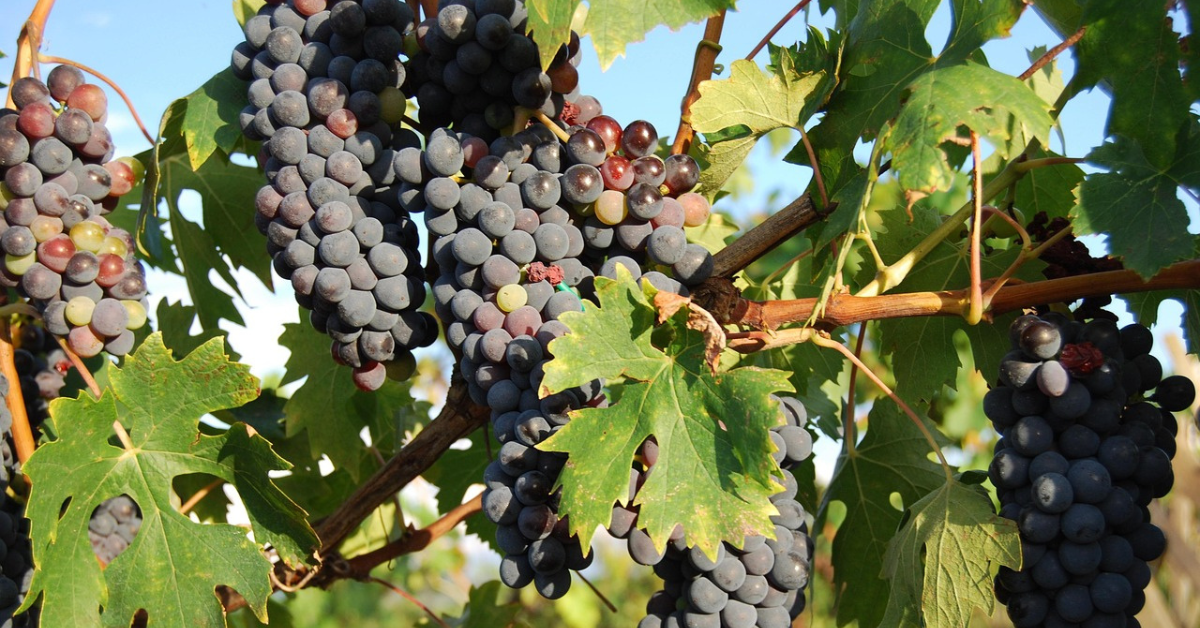For over 8,000 years, humans have cultivated grapes, refining a complex agricultural art known as viticulture. From ancient Mediterranean vineyards to modern homesteads, the grapevine has remained a symbol of abundance, health, and community. But what if you could cultivate your own vineyard-style vines right at home? In this comprehensive guide, we demystify the process and show you exactly how to grow grapes, no matter your space or experience level.
advertisement
Table of Contents
Why Grow Grapes at Home?
Growing grapes at home is both rewarding and surprisingly manageable. These fruiting vines offer more than just delicious clusters—they provide shade, privacy, and aesthetic appeal. Grapes are rich in antioxidants and resveratrol, known for their heart-healthy and anti-inflammatory properties. The leaves are edible and the vines can be used in crafting or natural fencing. Simply put, grapevines are one of the most efficient double-duty plants in any landscape.
Despite their historic legacy and reputation for being high-maintenance, grapes aren’t actually hard to grow when armed with the right information. In this guide, you’ll learn everything from choosing the right grape variety to harvesting your first crop.
advertisement
I. Choosing the Right Grape Variety
A. Climate is King
Your local climate determines which grape varieties will thrive. Grapevines flourish in regions with warm summers and mild winters, ideally between 60°F and 90°F. During early growth, cooler temperatures (60-70°F) support root development, while 70-90°F promotes optimal ripening. Excessive humidity can cause disease, while low humidity may dry out berries.
Sunlight is non-negotiable—grapes need at least 6 hours of direct sunlight daily. For precise local recommendations, consult your regional extension office.
B. Grape Types & Uses
Grapes are generally categorized into:
- Table Grapes: Fresh eating varieties like Concord, Himrod, Canadice, and Seedless types.
- Juicing Grapes: Niagara, Concord, Catawba.
- Wine Grapes: Pinot Noir, Merlot, Riesling, and Edelweiss.
Most grape varieties are self-fertile and don’t require a pollination partner. Native American grapes (e.g., Muscadine) are highly disease-resistant and cold-hardy, while European varieties (Vitis vinifera) prefer long, dry summers.
C. The “Terroir” Factor
In wine culture, “terroir” describes how a vineyard’s location—its soil, slope, climate, and even surrounding vegetation—affects grape flavor. Even for home growers, this idea helps choose the right site and variety.
II. Site Selection and Soil Preparation
A. Ideal Location
Choose a spot with full sun, warmth, and minimal shade from buildings or trees. In cooler climates, a south-facing wall or even a greenhouse can boost success.
advertisement
B. Soil Type & Drainage
Grapevines dislike “wet feet.” Sandy loam with excellent drainage is ideal. Avoid clay-heavy soils unless amended. Aerated soil ensures deep root development.
C. Soil pH
Grapes thrive in slightly acidic soil (pH 5.5 to 7.0). Test your soil beforehand and adjust with powdered sulfur if needed.
D. Organic Matter
Improve soil structure and fertility with compost or well-rotted manure. This enhances water retention and provides essential nutrients.
III. Propagation Methods
A. Cuttings (Preferred)
Take hardwood cuttings in late fall or winter from pencil-thick sections of last year’s growth. Store cool and plant in spring, burying 2/3 of the cutting.
For softwood cuttings, use 4-inch segments from healthy stems in late spring. Keep in a humid environment until roots form.
B. Seeds (Not Recommended)
Seeds take years to mature and rarely replicate parent characteristics. They must be stratified (cold-treated) for 90 days. Only use if experimenting.
IV. Planting Your Grapevines
A. Best Time
Plant in early spring during dormancy, after the last frost.
advertisement
B. Potted vs. Bare-Root
- Potted vines: Can be planted anytime, more forgiving.
- Bare-root vines: Soak roots 3-4 hours before planting. Ensure the graft union is above soil level.
C. Spacing
Space vines 6-10 feet apart. Muscadine types may need up to 16 feet.
D. Support Systems
Install your trellis before planting. Use horizontal wires, arbors, or pergolas. Ensure adequate airflow and sun exposure.
V. Grape Vine Care & Maintenance
A. Early Years (1-2)
Focus on root growth. Some experts avoid pruning in year one, but most recommend selecting a single trunk and training early.
Remove flowers for the first two years to prioritize root and vine development.
B. Watering
Provide 1 inch/week or 20-25 inches annually. Deep watering is preferable to shallow watering. Always water at the base to avoid fungal issues.
C. Fertilizing
Avoid over-fertilizing, especially with nitrogen. Use compost in the first two years. By year 3, use slow-release fertilizers rich in potassium.
D. Pruning: Your Secret Weapon
Pruning improves airflow, disease resistance, and fruit quality. Prune when vines are dormant (late winter to early spring).
advertisement
Key Anatomy for Pruning:
- Trunk: Single vertical base.
- Runs: Horizontal arms.
- Ladders: Vertical shoots.
- Clusters: Fruiting areas.
Expect to remove 60-80% of growth annually. Each year, train new ladders to extend vine height across multiple trellis wires.
E. Training
Tie new shoots to the trellis to encourage vertical growth and sun exposure. Maintain a central trunk with balanced ladders and runs.
F. Pests & Disease
Common problems include:
- Japanese beetles: Use traps or neem oil.
- Powdery mildew: Ensure air circulation; use fungicide if needed.
- Black rot: Remove infected leaves/fruit immediately.
Practice prevention through proper pruning, deep watering, and regular inspection.
VI. Harvesting Grapes
advertisement
A. Ripening Season
Depending on the variety, grapes ripen from late summer through fall. Grapes don’t ripen after being picked—timing is crucial.
B. Ripeness Indicators
Ripe grapes are full-colored, juicy, and sweet. Do a taste test. If grapes are shriveling or dropping, it’s too late.
C. Harvesting Technique
Use sharp shears to snip entire clusters. Handle gently to prevent bruising.
D. Storage
Store grapes in a cool, dry place. Keep them away from strong odors, as they absorb smells easily.
VII. Advanced Considerations
A. Organic Growing
Avoid synthetic pesticides and use compost teas, crop rotation, and disease-resistant varieties. Look into certifications from USDA or CCOF.
B. Wine Taste & Growing Style
Soil, sun, and technique all influence grape flavor. Grafting can help manage disease resistance while enhancing growth.
C. Vertical Gardening
Use fences or walls to grow grapes vertically, ideal for urban and small-space gardeners. Bonus: privacy and beauty!
VIII. FAQs
Q: What are the benefits of pruning?
A: Pruning boosts fruit quality, improves sunlight access, and reduces disease risk.
Q: Can I grow grapes from seeds?
A: It’s possible, but not ideal. Cuttings are faster and more reliable.
Q: How many grapes will one vine produce?
A: Expect 10-20 pounds per mature vine annually.
Q: When should I prune?
A: Late winter to early spring, when the vine is dormant.
advertisement
Conclusion
Growing grapes is an ancient yet accessible joy. Whether you’re hoping for a few clusters on your patio or dreaming of homegrown wine, success lies in smart planning and consistent care. By understanding climate needs, selecting the right variety, mastering soil preparation, and practicing good pruning habits, you can harvest sweet, sun-kissed fruit from your own garden.
Now that you know how to grow grapes at home, why not start your vineyard journey today?


